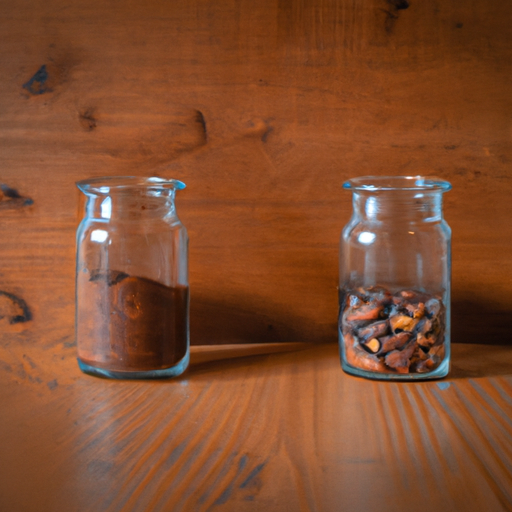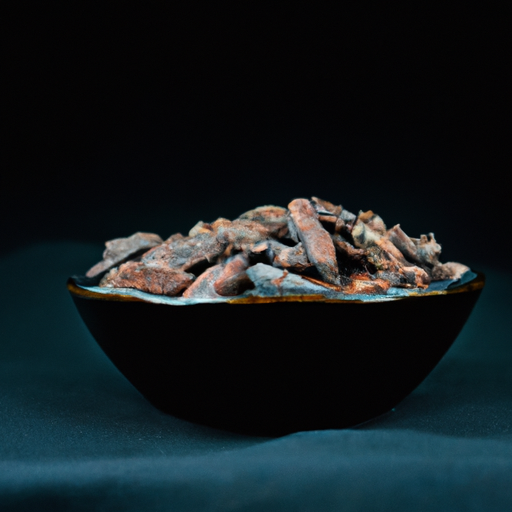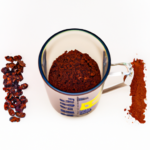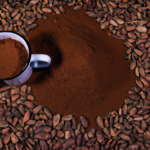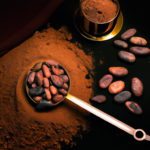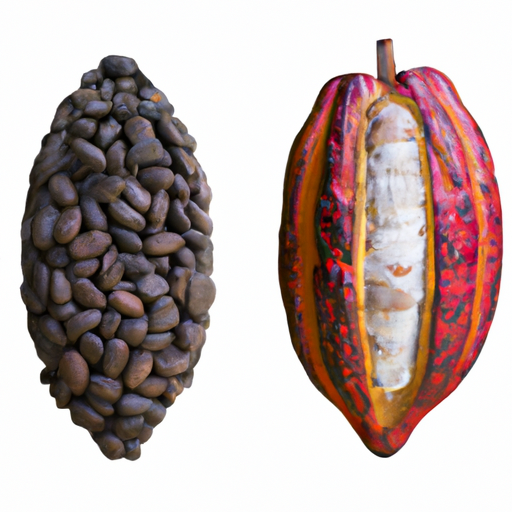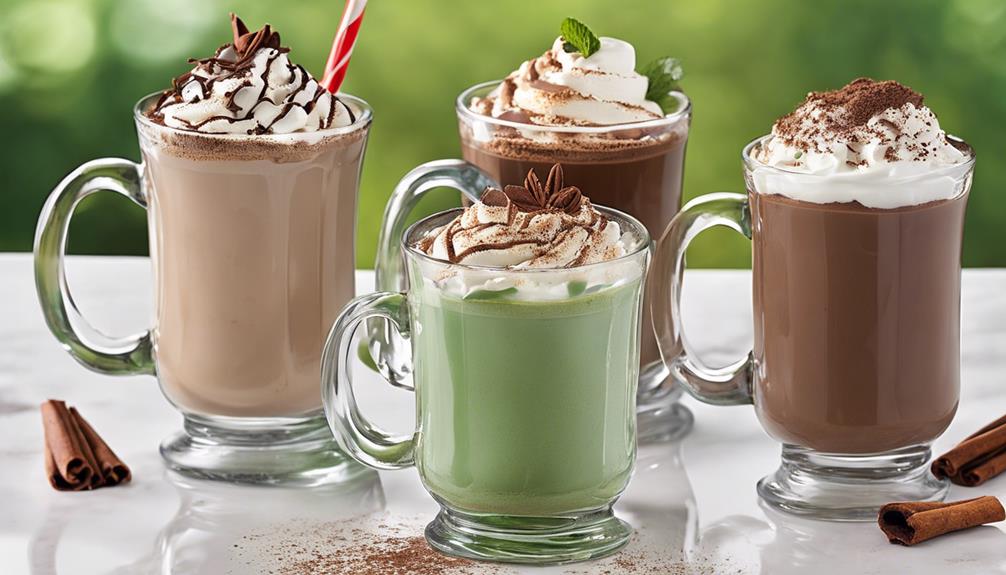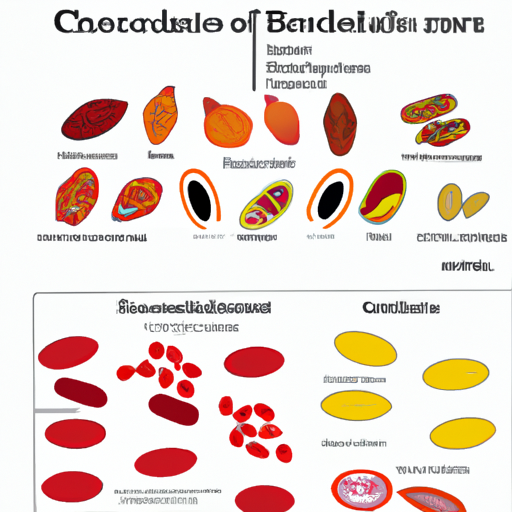Have you ever wondered how the amount of caffeine in raw organic cacao beans compares to coffee? Well, I certainly have.
As a coffee lover, I often find myself seeking alternative sources of caffeine that are not only delicious but also provide health benefits. That’s where cacao beans come into the picture. Known for their rich flavor and potential health perks, cacao beans have been gaining popularity in recent years.
But how do they stack up against our beloved cup of joe in terms of caffeine content? In this article, we will explore the caffeine levels in raw organic cacao beans and compare them to coffee.
We will also delve into the health benefits of both cacao beans and coffee, discuss caffeine sensitivity and personal preferences, and provide tips for incorporating cacao beans into your diet.
So, let’s dive in and make an informed choice about our daily caffeine fix.
Key Takeaways
- Raw organic cacao beans contain about 12 milligrams of caffeine per ounce.
- Coffee typically contains around 95 milligrams of caffeine per cup.
- Cacao beans are a milder option for reducing caffeine intake compared to coffee.
- When comparing caffeine content, cacao beans have significantly less caffeine than coffee.
Caffeine Content in Raw Organic Cacao Beans
Did you know that raw organic cacao beans not only contain a rich flavor, but also pack a surprising amount of caffeine?
While cacao beans are primarily known for their role in chocolate production, they also possess some stimulating properties due to their caffeine content.
Caffeine, a natural stimulant, can have various effects on the body, such as increased alertness and improved cognitive function.
However, it’s important to be aware of the potential risks associated with excessive caffeine consumption, including insomnia, nervousness, and increased heart rate.
Now, let’s explore how the caffeine content in raw organic cacao beans compares to that in coffee.
Caffeine Content in Coffee
Brewed coffee can pack a punch with its caffeine content, making it a popular choice for those seeking a jolt of energy. On average, an 8-ounce cup of brewed coffee contains about 95 milligrams of caffeine.
Caffeine, a natural stimulant, affects the central nervous system and can increase alertness and reduce fatigue. It is quickly absorbed into the bloodstream and reaches its peak concentration within 30 to 60 minutes after consumption.
The half-life of caffeine, which is the time it takes for the body to eliminate half of the caffeine, varies among individuals but is generally around 3 to 5 hours. This means that the effects of caffeine can last for several hours before gradually wearing off.
Now, let’s compare these caffeine levels to the amount found in raw organic cacao beans.
Comparing Caffeine Levels
With its ability to enhance alertness and reduce fatigue, the caffeine content in brewed coffee is often sought after. However, it pales in comparison to the invigorating effects of raw organic cacao beans.
While a cup of coffee typically contains around 95 milligrams of caffeine, raw cacao beans contain only about 12 milligrams per ounce. This significant difference in caffeine levels can be attributed to the fact that cacao beans naturally contain less caffeine than coffee beans.
Additionally, the effects of caffeine in cacao beans may be more subtle and longer-lasting compared to the immediate jolt provided by coffee. Caffeine in cacao beans is metabolized slowly, resulting in sustained energy and focus throughout the day. This makes cacao beans an excellent alternative for those looking for a gentler, yet still effective, caffeine boost.
Moving on to the next section, the health benefits of cacao beans will be discussed.
Health Benefits of Cacao Beans
One cannot deny the numerous health benefits that cacao beans offer. Cacao beans are packed with antioxidants, which are beneficial for overall health and well-being. Antioxidants help to neutralize harmful free radicals in the body, reducing the risk of chronic diseases such as heart disease and cancer.
Additionally, cacao beans contain compounds that can positively impact mental health. They are a natural source of serotonin, which is a neurotransmitter known for its mood-enhancing effects. Consuming cacao beans can promote feelings of happiness and reduce symptoms of anxiety and depression.
Furthermore, cacao beans have been shown to improve cognitive function and enhance focus and alertness. These benefits make cacao beans a valuable addition to any diet.
Transitioning to the subsequent section about the health benefits of coffee, it is important to explore how these two popular sources of caffeine compare in terms of their potential advantages.
Health Benefits of Coffee
If you’re looking to boost your overall well-being and improve your mental focus, coffee offers a range of health benefits that you won’t want to miss out on. Here are three reasons why incorporating coffee into your daily routine can be beneficial for your mental health and exercise performance:
-
Enhanced mental focus: Coffee contains caffeine, a natural stimulant that can improve alertness, concentration, and cognitive function. It can help you stay focused and alert throughout the day, making it easier to tackle tasks and stay productive.
-
Improved exercise performance: Consuming coffee before a workout has been shown to enhance endurance, increase muscle strength, and improve athletic performance. The caffeine in coffee stimulates the central nervous system, leading to increased adrenaline production and improved physical performance.
-
Reduced risk of depression: Studies have found that coffee consumption is associated with a lower risk of developing depression. Regular coffee intake has been linked to a decreased risk of depressive symptoms and a lower risk of suicide.
Incorporating coffee into your daily routine can have numerous benefits for your mental health and exercise performance. As we delve into the topic of caffeine sensitivity and personal preferences, it’s important to understand the role of coffee and its potential impact on our well-being.
Caffeine Sensitivity and Personal Preferences
Now that we’ve explored the health benefits of coffee, let’s delve into a topic that many caffeine enthusiasts are interested in: caffeine sensitivity and personal preferences.
While coffee can provide an energy boost, it’s important to consider our individual caffeine tolerance. Some people have a higher tolerance and can consume more caffeine without experiencing negative effects, while others may be more sensitive and need to limit their intake.
It’s also worth noting that caffeine can have varying effects on sleep quality. While it can help us feel more alert during the day, consuming caffeine too close to bedtime may disrupt sleep patterns. So, it’s important to be mindful of our caffeine intake and how it affects our sleep.
Now, let’s move on to explore alternative sources of caffeine without skipping a beat.
Alternative Sources of Caffeine
There’s a whole world of caffeinated beverages out there, ready to give you the energy boost you need. If you’re looking for alternatives to coffee, there are plenty of options that can provide a natural energy boost. Here are a few caffeine alternatives to consider:
-
Green tea: Known for its antioxidant properties, green tea contains caffeine but in smaller amounts compared to coffee. It also provides a calming effect due to the presence of L-theanine.
-
Matcha: Made from powdered green tea leaves, matcha contains caffeine and is known for its sustained energy release and mental clarity.
-
Yerba mate: Popular in South America, yerba mate contains caffeine and provides a balanced energy boost along with vitamins and minerals.
-
Herbal teas: Certain herbal teas like peppermint, ginseng, and ginger can provide a refreshing pick-me-up without the caffeine.
These caffeine alternatives can be incorporated into your daily routine for a natural energy boost.
Now, let’s explore some tips for incorporating cacao beans into your diet.
Tips for Incorporating Cacao Beans into Your Diet
Looking to add a delicious and nutritious twist to your diet? Incorporate cacao beans into your meals and snacks for a burst of flavor and a boost of natural energy.
Not only do cacao beans provide a rich and decadent taste, but they also offer numerous health benefits.
One great way to incorporate cacao beans into your diet is by using them in desserts. You can sprinkle crushed cacao beans on top of your favorite ice cream or yogurt for added crunch and a touch of bitterness. Alternatively, you can try making cacao bean recipes such as brownies, cookies, or energy balls. These treats will not only satisfy your sweet tooth but also give you a natural energy boost.
By incorporating cacao beans into your diet, you can enjoy the benefits of their antioxidants and other nutrients.
In conclusion, making an informed choice about caffeine sources is important for maintaining a balanced diet.
Conclusion: Making an Informed Choice
To wrap it up, being well-informed when it comes to selecting your caffeine source is crucial for creating a conscious and balanced diet.
When comparing the caffeine content in raw organic cacao beans to coffee, it’s important to note that cacao beans contain significantly less caffeine. While a typical cup of coffee contains around 95 milligrams of caffeine, raw cacao beans have only about 12 milligrams per ounce. This makes cacao beans a milder option for those looking to reduce their caffeine intake.
However, it’s worth mentioning that caffeine is also found in other sources like tea, which can vary in its caffeine content depending on the type and preparation.
Additionally, it’s important to be aware of potential side effects of caffeine consumption, such as increased heart rate, anxiety, and disrupted sleep patterns.
It’s always a good idea to listen to your body and make informed choices when it comes to your caffeine intake.
Frequently Asked Questions
Are there any negative side effects of consuming caffeine from raw organic cacao beans?
Negative effects of consuming caffeine from raw organic cacao beans may include increased heart rate, anxiety, and insomnia. Long-term consumption may lead to dependence and withdrawal symptoms. It is important to consume in moderation and be aware of individual tolerance levels.
Can the caffeine content in raw organic cacao beans vary depending on the variety or origin?
Yes, the variety and origin of raw organic cacao beans can impact their caffeine levels. Different varieties and growing conditions can result in variations in caffeine content, making it important to consider these factors when consuming cacao beans.
Is it possible to extract or remove caffeine from raw organic cacao beans?
Yes, it is possible to extract or remove caffeine from raw organic cacao beans. Various extraction methods can be used to reduce caffeine levels, allowing for a lower caffeine content in the final product.
How does the taste of caffeine in raw organic cacao beans compare to the taste of caffeine in coffee?
Tasting the buzz of caffeine in raw organic cacao beans is like savoring a velvety elixir. While coffee offers a bolder flavor, cacao’s caffeine brings a subtle richness that appeals to different taste preferences. Both have unique health benefits.
Are there any potential interactions or contraindications between consuming caffeine from raw organic cacao beans and certain medications or health conditions?
Interactions with medications and contraindications with certain health conditions may occur when consuming caffeine from raw organic cacao beans. It is important to consult with a healthcare professional for personalized advice.
Is There Caffeine in Organic Powdered Cocoa Like There Is in Raw Cacao Beans?
Yes, organic powdered cocoa vs raw cacao does contain caffeine, just like raw cacao beans. The caffeine content in both forms of cocoa is natural and can vary depending on the processing method. However, the caffeine levels in organic powdered cocoa and raw cacao are relatively similar.
Conclusion
After comparing the caffeine levels in raw organic cacao beans and coffee, it is clear that cacao beans contain significantly less caffeine than coffee. This means that consuming cacao beans can provide a milder energy boost without the jitters or sleep disturbances often associated with coffee.
Additionally, cacao beans offer various health benefits, such as being rich in antioxidants and minerals. Interestingly, studies have shown that cacao beans can even improve mood and reduce symptoms of depression.
With these benefits in mind, incorporating cacao beans into your diet can be a delicious and healthy choice.

